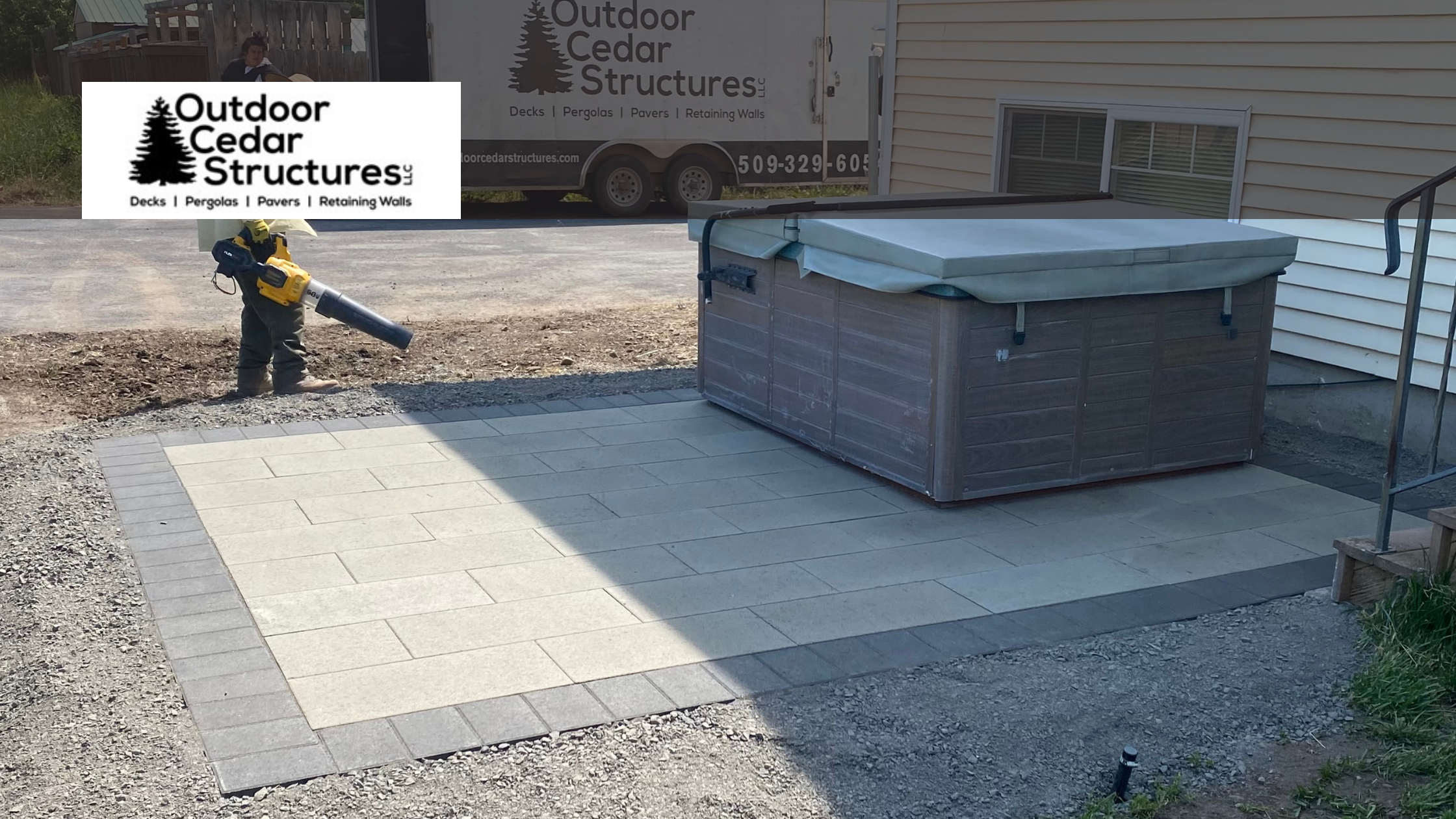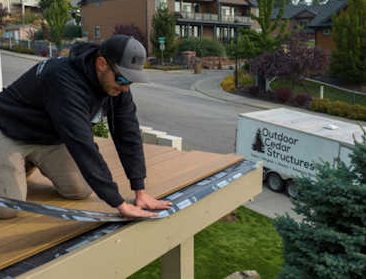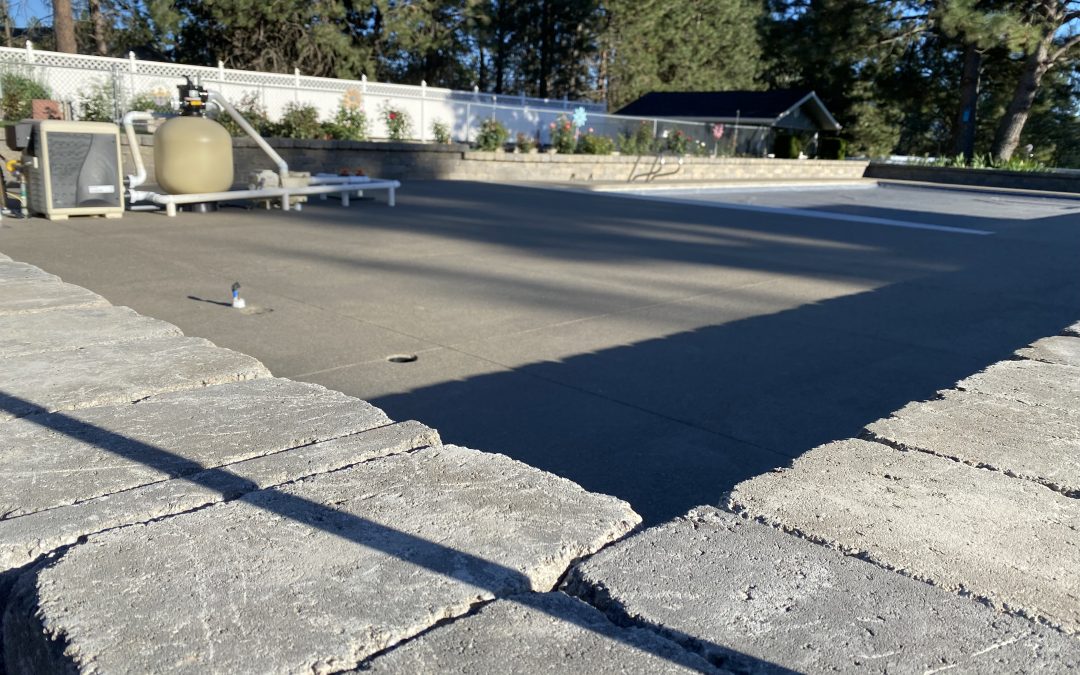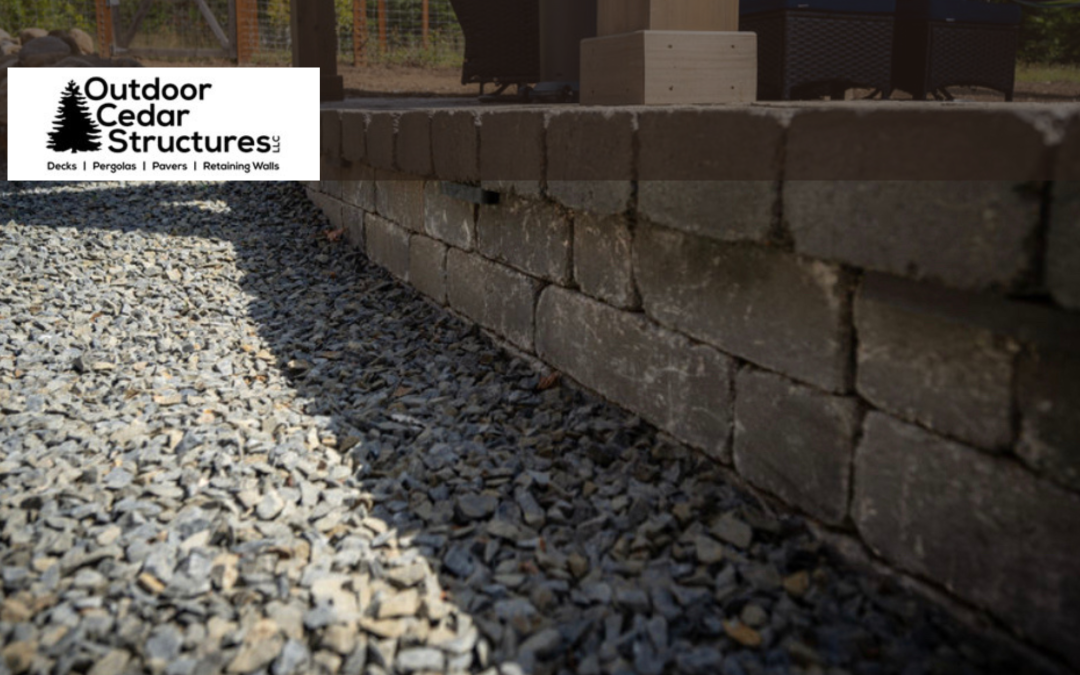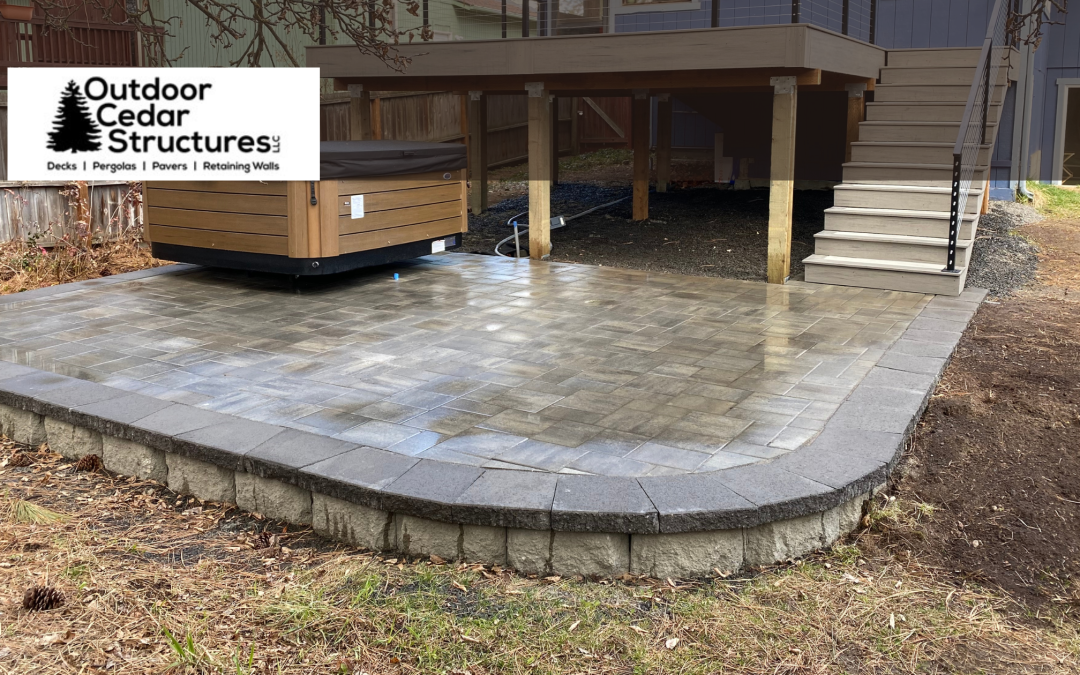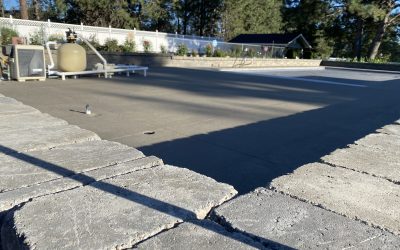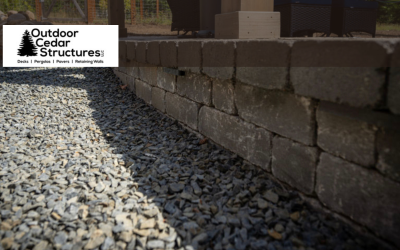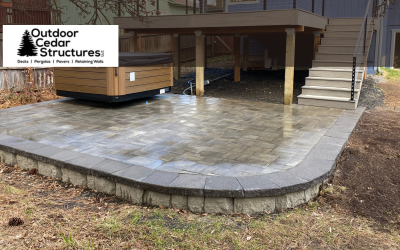Designing and constructing a new patio can be an exciting venture. However, it’s essential to remain vigilant, as this excitement can lead you to overlook critical aspects such as ensuring proper water drainage.
At Outdoor Cedar Structures, we take the guesswork out of designing your patio and ensuring all aspects of your patio, including proper patio drainage, are taken care of.
In this blog, we will share the importance of adequate patio drainage and practical water management tips to prevent problems like flooding and erosion and prolong the lifespan and integrity of your outdoor living space.
Why Is Drainage So Important?
While it might not be the most glamorous design feature, proper drainage is critical to your outdoor patio’s long-term health and beauty.
Without it, water can pool on the surface and create safety hazards, such as slippery surfaces that increase the risk of slips and falls. Standing water can also cause structural damage over time. This can weaken your patio’s base materials and lead to cracks, settling, and uneven surfaces. This compromises your patio’s structural integrity.
And because damp environments are breeding grounds for mold and mildew, standing water can make your patio unpleasant and potentially hazardous to your health.
Choose the Right Drainage Option.
Different drainage options are suitable for various patios, as listed below. The right choice depends on your outdoor space’s layout and specific requirements.
Our team here at Outdoor Cedar Structures can help you choose the best type for your project:
- Sloped surface: Adding a slight slope to your patio’s design is a simple yet effective way to let water flow naturally from the surface to designated drainage areas.
- Channel drains: These are long and narrow drains installed alongside the perimeter of your patio, creating a grate covered trench.
The grate allows water to flow from the patio’s surface into the drain, preventing leaves and other debris from entering. This makes them a good option for patios with straight edges.
- French drains: These are underground drainage systems with a perforated pipe surrounded by a rock or gravel to filter and distribute water. They collect and redirect water from the patio.
- Rain gardens: Incorporating vegetation and plants into your patio enhances its aesthetic appeal and can also be an eco-friendly drainage solution.
Choose Suitable Patio Pavers.
You can minimize the risk of water pooling in your patio from the get-go by choosing suitable materials to mitigate the problem.
Permeable pavers:
The gaps between these pavers allow water to seep through and be absorbed by the ground or soil below. This is why permeable pavers are ideal for preventing water accumulation on the structure’s surface. In addition, they help minimize runoff and encourage natural drainage.
Porous concrete:
Also known as permeable or pervious concrete, these pavers contain a special mix to prevent water from passing through the surface to reach the ground below. They are durable and withstand heavy foot traffic while ensuring effective water drainage.
Natural stone:
Slate or flagstone pavers can help ensure proper drainage of your patio. Just be sure they are installed by qualified contractors who can create space between each paver, allowing water to flow through the gaps instead of pooling on the surface.
The base layer beneath the pavers should be installed with a slight tilt, creating a slope that directs water runoff away from your patio and towards a drainage system (like channel drains) or an approved drainage area.
The pavers should also be securely set on the base material to prevent them from shifting and make water flow freely through the gaps without getting trapped underneath.
Crushed stone or gravel: These pavers are naturally drainage-friendly because the spaces between the rocks allow water to percolate through instead of pooling on the surface.
A permeable base layer beneath the pavers can further enhance this natural drainage.
Elevated decking: Do you want a raised patio? We recommend hardwood or composite decking, which will let water flow freely under the deck and prevent water from pooling on the surface.
Avoid patio drainage problems.
Regardless of the paver material used, proper design and installation are essential. Here are some pointers:
Your patio shouldn’t be perfectly flat. A slight slope angled away from your house helps water run off towards a drain or designated drainage area.
Consider incorporating channel drains or other suitable systems along the edges to collect and direct water runoff.
Keep your patio and drains clean to prevent clogs. Regularly remove leaves, debris, and dirt buildup, especially after heavy rain or storms.
Ensure that your downspouts are adequately extended and directed away from your patio. Position roof overhangs to channel rainwater away from the patio surface. This prevents water from pooling near your house and damaging the foundation or pavers.
Get the pros to design your patio.
Check with us at Outdoor Cedar Structures for a properly designed patio with adequate drainage—call (509) 329-6054 to schedule your free design consultation.

